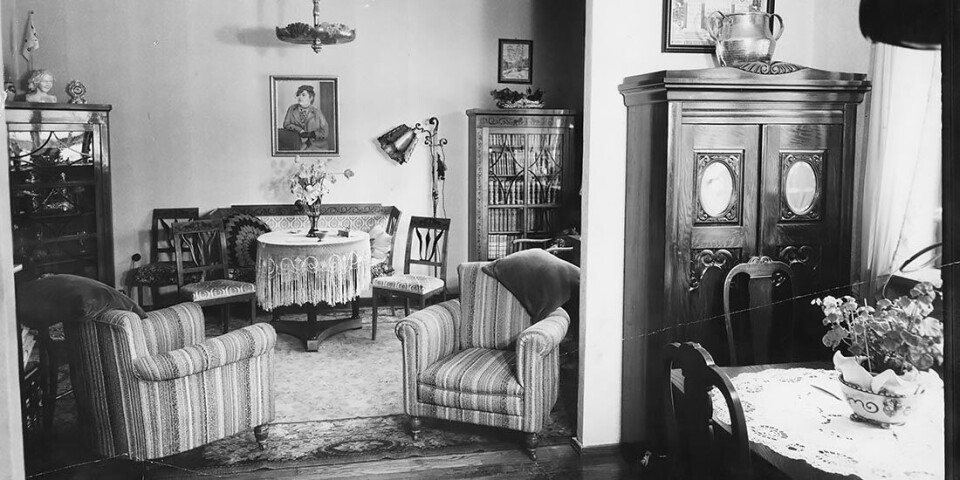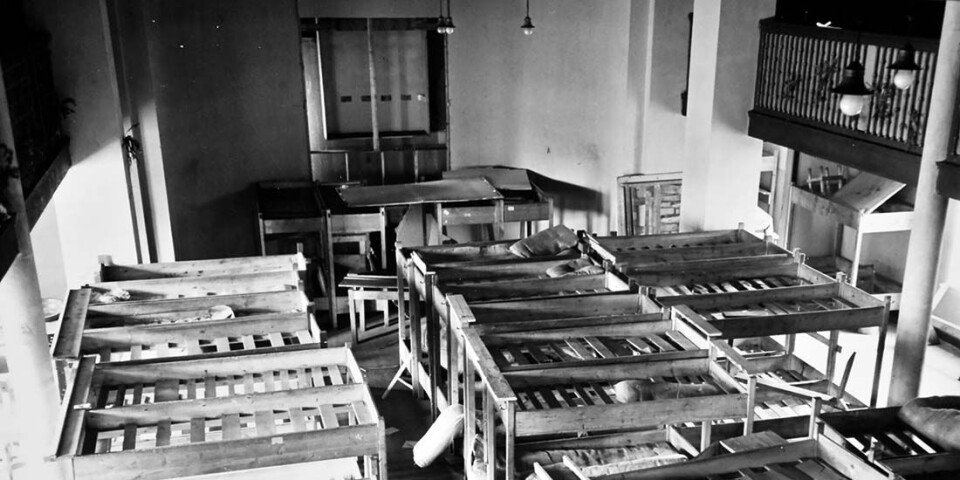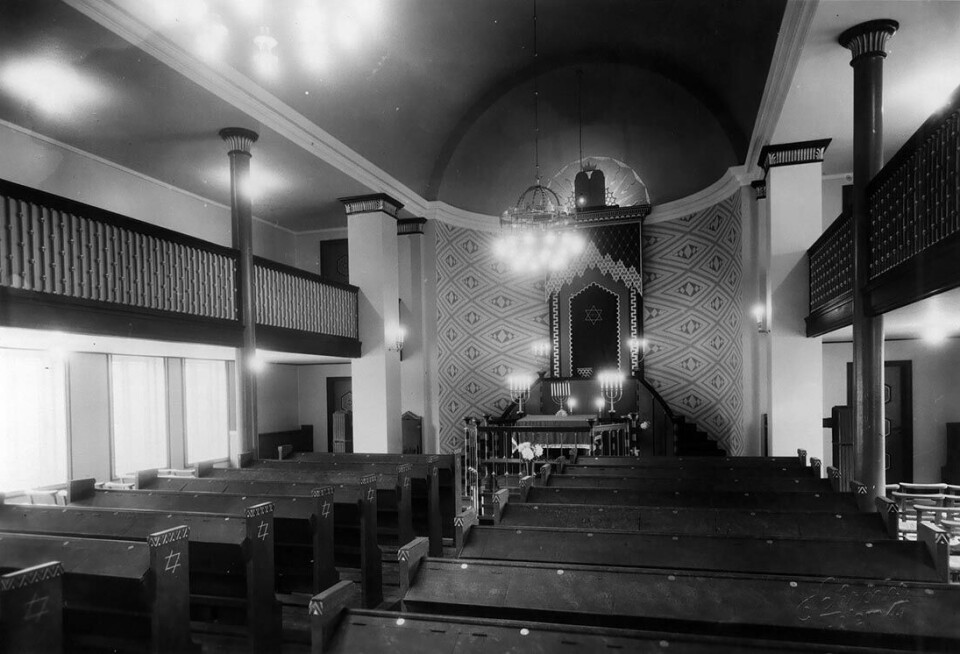THIS CONTENT IS BROUGHT TO YOU BY NTNU Norwegian University of Science and Technology - read more
Valuable possessions were not returned to Norwegian Jews after the war
All Norwegian Jews had their homes, possessions, and businesses confiscated by the Nazis. Yet significant assets were neither returned nor replaced when the war was over.

About one million Jews were killed in Auschwitz, among them most of the nearly 800 Norwegians who were deported.
After the Allied victory on May 8, 1945, Jews who had fled from Norway to Sweden began to return home. By the end of May, the first of the small group who had survived in the concentration camps arrived.
This homecoming was difficult. Most had lost family and friends. In addition, their homes had been taken over by others. The same was true of businesses. Their possessions had been scattered to the winds. The slow and difficult process of getting back on their feet began.
“The shortcomings with the return of goods and properties had major consequences for Jewish survivors,” says Elise Barring Berggren.
She is a researcher at NTNU’s Department of Modern History and Society.
Less than half
Berggren’s ongoing research focuses on what happened when the Norwegian state was supposed to return properties and compensate Jews for their material losses as a result of the war.
In her work, she found that less than half of what Norwegian Holocaust survivors applied for was returned or compensated for.

“And it's important to point out that these figures only apply to what was reported to the institutions, not the actual total loss, which is probably significantly higher,” she says.
Berggren believes there were several reasons for this failure on the part of the government.
Norway’s legal and economic framework was a poor starting point. The settlement was shaped by an understanding of the war in which the persecution of Jews was considered just one of many atrocities. This was decisive for an unfavourable result.
Antisemitism also played a role in one of the institutions that handled the settlement.
“After the war, antisemitism was no longer as acceptable in the public sphere. But that didn’t mean it was gone. In the internal communication in the Norwegian Settlement Department, Jews were referred to in a nasty way, and the antisemitic motivation was clear. I haven't found this in other institutions that worked with recovery after the war,” says Berggren.
Not among the priorities
Berggren says that even small changes in the government’s approach could have given Norwegian Jews a fairer settlement.
Things went wrong at multiple levels: in the preparatory work for the laws adopted by the Norwegian Parliament, in key decisions by the compensation offices, and with individual case officers, she believes.
“The state determined that there was not enough money for full recovery. Arrangements were made to cut compensation, and to prioritise some victim groups. It's clear that resistance fighters and the population who had been burned out of their homes and properties in North Troms and Finnmark were prioritised, and that the victims of the Holocaust came out very disadvantageously," she says.
Berggren adds that as the legislators saw it, resistance fighters were particularly dignified and the reconstruction in Northern Norway was considered especially important.
"Having lost everything one owned during the Holocaust did not fall under a ‘special consideration’,” she says.
Slow and bureaucratic
After the war, the Norwegian Parliament passed five restitution laws and commissioned five institutions to carry out settlements for everyone in Norway who had suffered material losses due to the war.
The Reinstatement Office handled assets that had been recovered. Three different war damage insurance schemes provided compensation for movable property, buildings, and inventories. The Settlement Department compensated people for various other losses.
The settlement system was confusing and bureaucratic. Survivors had to list all their possessions. Letter after letter was sent to the various offices. The process was slow.
“These were people who had been exposed to severe mental and physical stress. Almost all Norwegian Jews had lost family or friends in the Holocaust, most had been refugees in another country, and many were subjected to abuse and held in prison camps in Norway. A few had survived the concentration camps on the continent,” she says.
The Norwegian government did not give compensation and reparation for injustice and suffering.
Negative spiral
Berggren has also looked at how survivors experienced the recovery, and their efforts to rebuild their lives.
Because Norwegian Jews were inadequately compensated for their losses, they often ended up in a negative spiral where one loss led to another.
“We see in their correspondence that many struggled to live normal lives. Those who had had businesses did not receive compensation for lost inventories, because confiscation was not defined as a war injury under the inventory insurance. If you did not restore the company, you did not receive compensation for it,” she says.
Berggren says many lacked sufficient funds to buy necessities, such as chairs, beds, and winter clothes.
"Many worked hard to get out of this negative spiral, by rebuilding the family business, taking out loans to stay afloat – and seeking compensation,” she says.
“My nerves suffer”
For the survivors, restitution was about far more than material values.
“It was about coming home, rebuilding everyday life, about the attachment of possessions to memories and family members, and the search for justice,” says Berggren.
A woman who had lost her husband in the Holocaust wrote to the War Damage Insurance Office for movable property and told of her difficulties. She struggled to rebuild her home and asked for financial compensation for the family business, which she was unable to start again. The letter ended like this:
'I hope that you will be so kind as to answer soon, as my nerves suffer from constantly being reminded of everything that used to be.'
In response to the letter, the War Damage Insurance Office chose to cut compensation because she could not get the company up and running again.
A comprehensive database
Berggren scoured all 2,500 case files in the restitution offices that relate to Norwegian Jews.
She has created a database of everyone who was persecuted in the Holocaust and the restitution of their property.


In 1998, more than 50 years after the war, a new round of reparations after the Holocaust was introduced, consisting of an individual and a collective part totalling NOK 450 million (44.5 million USD).
The Norwegian Centre for Holocaust and Minority Studies in Oslo was established and funded through this settlement.
———
Read the Norwegian version of this article at forskning.no
More content from NTNU:
-
Can we tap the ocean’s power to capture carbon?
-
Researchers have uncovered major problems in Norway's salmon industry
-
Why ChatGPT is bad at imitating people
-
Outer space has a trash problem, according to researchers
-
These researchers want quantum computers that work properly
-
If you can hear your neighbour snoring, there’s something wrong with the building you live in





































